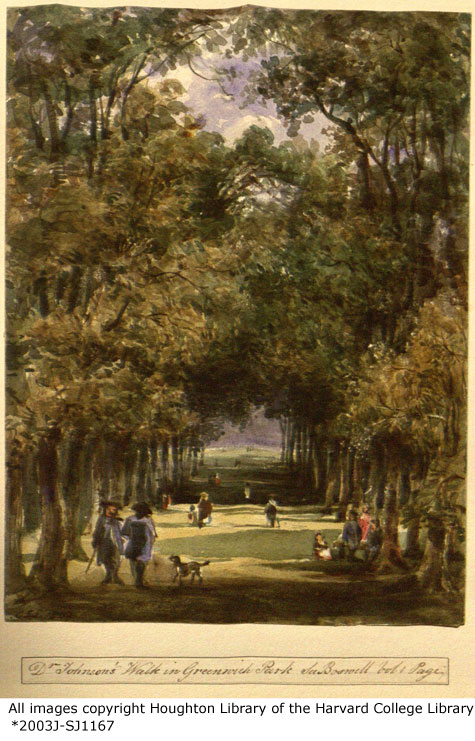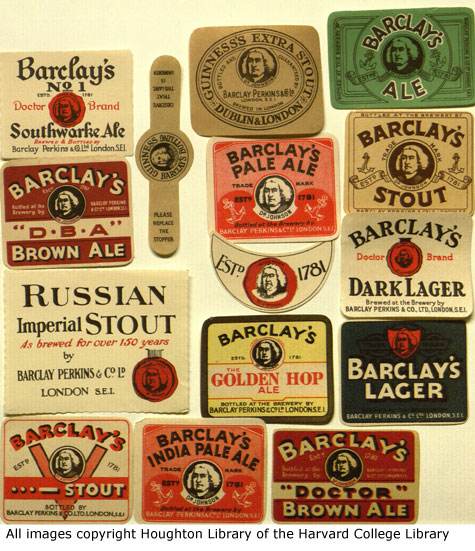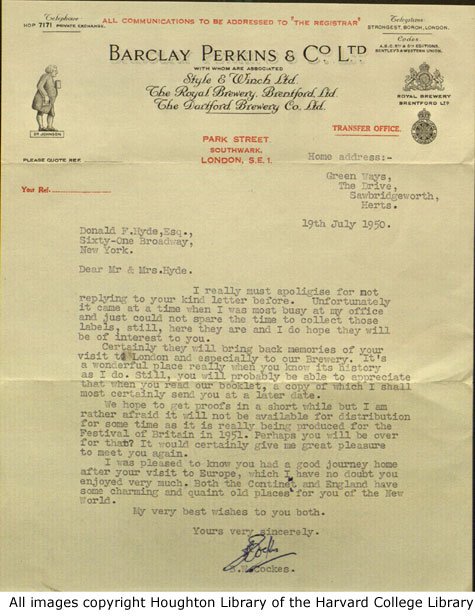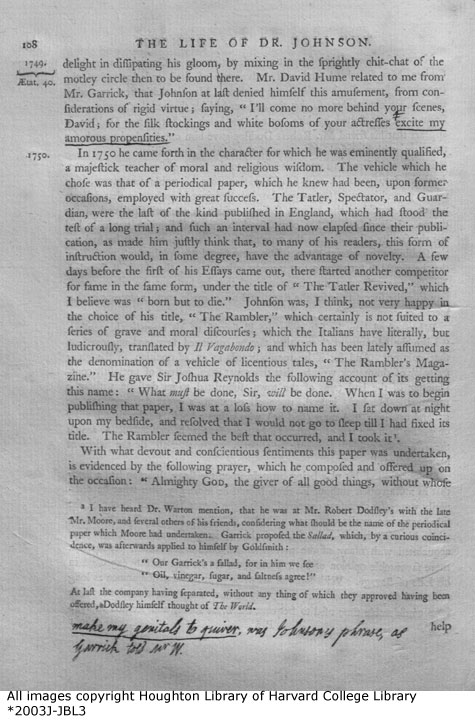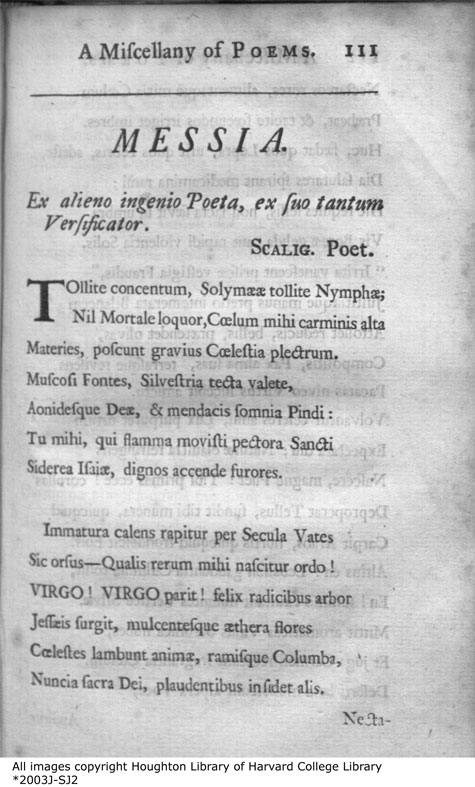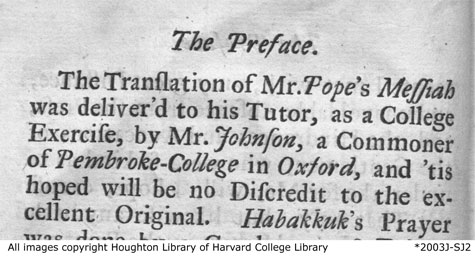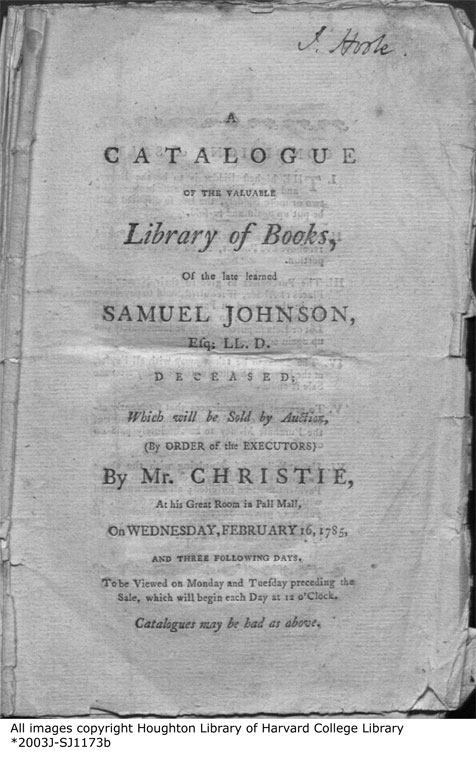In the midst of one of our copies of Graphic illustrations of the life and times of Samuel Johnson, LL.D. is bound a set of 11 lovely watercolors that don’t belong there. Unusually, they have formal captions at the bottom, and some of them seem to have additional materials printed onto the sheets. Fortunately for me, the bookdealer’s description of the item from when it was purchased by Mary Hyde Eccles 20 years ago is still with the book. You can’t see it here, but there’s a small “C.J.S. 1837” in the lower left corner, meaning that it’s probably the work of Charles John Smith, who died in 1838 with his projected Historical and Literary Curiosties still unfinished. Presumably, these were the proofs for the illustrations that would have gone in that work had he lived to complete it. I don’t know who it was that bound them into this other work, but I’m glad they haven’t been lost.
I particularly liked this one, which illustrates a passage from Boswell’s Life of Johnson. Boswell writes: “We walked in the evening in Greenwich Park. He asked me, I suppose, by way of trying my disposition, ‘Is not this very fine?’ Having no exquisite relish of the beauties of Nature, and being more delighted with ‘the busy hum of men,’ I answered, ‘Yes, Sir; but not equal to Fleet-street.’ JOHNSON. ‘You are right, Sir.’”
